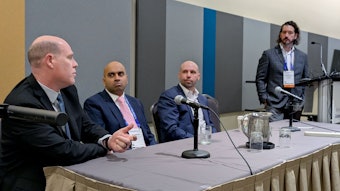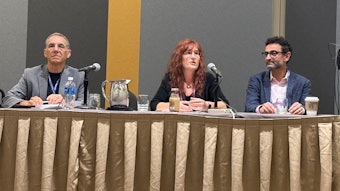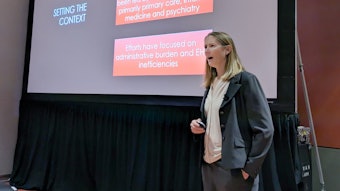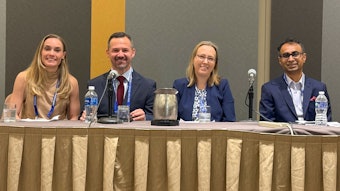Heading off drug shortage disasters
Drug shortages require teamwork and cooperation between companies, hospitals, and regulators.
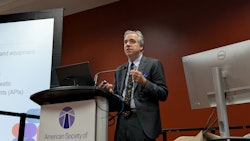
In late September 2024, Hurricane Helene slammed into North Carolina, bringing widespread flooding, wind damage, and devastation.
One of the hardest hit areas was North Cove, which happens to be home of a manufacturing facility owned by Baxter International, one of the largest medical supply companies in the world. At the time of the storm, Baxter supplied 60% of the IV fluid in the United States. But those supplies were about to be cut off as the only bridge leading in and out of the facility was destroyed by the storm.
The resulting shortage and how it was handled by both Baxter International and the medical community was the subject of the Monday session “Managing Drug Shortages: Building Partnerships Between Anesthesiologists, Hospitals, Regulators, and Industry.”
Beverly Philip, MD, FACA, FASA, Founding Director of the Day Surgery Unit at Brigham and Women’s Hospital and Professor of Anesthesia at Harvard Medical School in Boston, said the shutdown of the Baxter facility had an impact on health care by October.
“Within weeks, 86% of health care providers had a fluid shortage,” she said. “Many hospitals only received about 40% of their allocation, and 54% had less than 10 days’ supply on hand.”
These shortages soon led to cancellations of elective surgical procedures. Hospitals, including Brigham and Women’s, began to put protocols in place to help manage the shortage, Dr. Philip said. These included:
- Consolidating inventory to central distribution points
- Prioritizing critical patients
- Gathering input from the largest IV users (including anesthesiology departments) to generate conservation ideas
- Using alternative oral fluids like Gatorade or Pedialyte and hydration tablets
- Conducting a systematic review of processes to manage prioritization of surgical cases.
By mid-October, Brigham and Women’s initiated staff communication that warned of “serious and immediate” I.V. fluid shortage and conservation measures.
Some of the conservation protocols included:
- Shifting from continuous infusions to “push-dose” medications, followed by a small-volume saline flush
- Forgoing continuous IV carrier fluids entirely in some cases
- Avoiding the routine practice of placing a second I.V. line as a backup
- Using the smallest available IV fluid bags
- Prioritizing available solutions.
By the end of the month, the hospital was able to resume its full procedural schedule thanks to the conservation efforts of its staff. Those measures were kept in place, and supplies were re-evaluated daily.
From the perspective of Baxter International, the disaster was devastating. But a combination of preparedness, communication, and close work with health care practitioners helped keep supplies moving — albeit on a limited basis — until production at the North Cove facility was able to resume. The shortage ended in August 2025.
Although Baxter had a hurricane preparedness plan ahead of the storm, the loss of the bridge was unexpected, said Allison Hanson, PharmD, BCPS, FISMP, Director of U.S. and Canadian Medical Affairs at Baxter. The company “created its own blueprint as we went along during this experience.”
That blueprint included ongoing communication with the U.S. Food and Drug Administration, the public, health care personnel, and the company’s own employees. In particular, Baxter asked the FDA for authorization for temporary importation into the U.S. of certain foreign-approved Baxter products that are manufactured in other countries.
Baxter reached opened channels of communication with numerous medical societies, which enabled them to get feedback on where supplies were needed. It also followed up with frequent updates so their members could adjust their resources accordingly.
In addition to medical societies, Hanson said Baxter International created a temporary medical hotline, hosted webinars for customers related to the conservation of I.V. fluids, and developed educational videos to help clinicians better manage the shortage.
“Transparent, real-time, collaborative communication between manufacturers, government agencies, medical societies, and clinicians is essential during shortages to help ensure ongoing supply to patients,” Hanson said.
Closing out the session, Matt Popovich, PhD, ASA Chief Quality Officer, outlined ASA’s drug shortage policy proposals to address future shortages. These include:
- Regulatory initiatives such as working with the FDA and manufacturers to identify specific drug priorities and needs, incentivizing manufacturing production through smart compounding regulations, and maintaining regular communication with federal agencies during times of crisis
- Legislative priorities such as incentivizing drug manufacturers to have contingency or redundant production plans, enabling 503B compounding facilities to increase production and distribution of sterile injectable agents during periods of anticipated or actual shortages, and incentivizing studies for real-time testing of medications for potency and purity to extend use-by dates or shelf life
- Market-based solutions such as standardizing medical concentrations, containers, and sizes, standardizing medication labels via color-coding and other processes, and education efforts to ensure that physicians, faculty, health care professionals, pharmacies, and drug purchasers have the capacity to manage drug shortages.
Going forward, ASA is working on building coalitions to help create smart policy and smart regulations to mitigate future shortages.
“What are the ways that we want to see things addressed in the future, and how we can build that together with our government partners, manufacturers, and others,” he said. “It calls for clear and transparent communication.”






